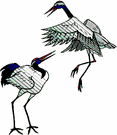Canon City Riverwalk
I birded the Canon City Riverwalk this afternoon. With temps in the 70's, I didn't expect to see a lot of bird activity since birds tend to disperse more during really nice weather. But I was delighted to find 4-5 Eastern Bluebirds doing some acrobatic flights among the trees along the Riverwalk. Though Eastern Bluebirds are quite unusual here, we have seen at least one small flock each winter for the past several years.
While I was watching the bluebirds, a Cooper's Hawk flew overhead and the several Black-capped Chickadees quieted briefly. There were a few Green-winged Teal dabbling in the Arkansas River with several Mallards, and I saw a pair of Common Mergansers floating downstream. Other birds seen, all common here, were Mourning Doves, Dark-eyed Juncos, dark geese, Rock Pigeons and Starlings.
SeEtta
















